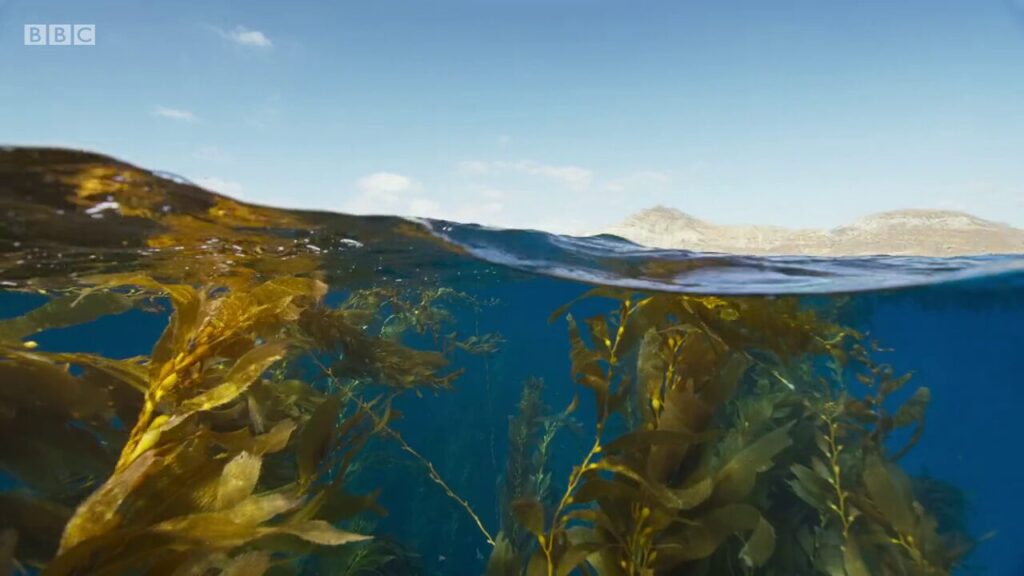Original air date: 26 November 2017

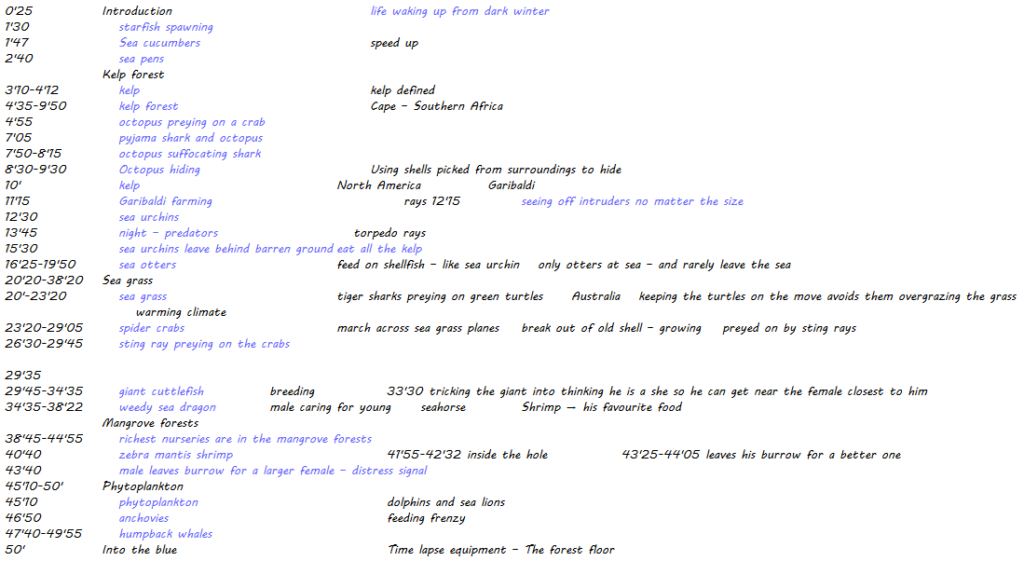
| Start time | Theme, Contents | More detailed description (Filming location) |
|---|---|---|
| 0’25 | Introduction | Life waking up from the dark winter |
| 1’30 | Starfish | Using the tips of their tubed feet to sense changes in the water to start spawning |
| 1’45 | Sea cucumbers | Having only their mouth exposed as they gather as many starfish eggs as they can – – Speed up camera until 3’25 |
| 2’40 | Sea pens | Grabbing what they can from this annual banquet |
| 3’10-20’20 | Kelp forest | Kelp is marine alga that provides both habitat and food source for many animals. It sticks to the bottom and has stemlike stipes that transport material to the fronds that stay afloat |
| 3’10-4’12 | Kelp | Fronds of kelp are lifted to the surface due to their gas-filled bladders. This leads to marine forest that are among the most productive water is the oceans. |
| 4’35-9’50 | Kelp forest | Bountiful forest where two great oceans (the Atlantic and Indean ocean) collide —(Southern tip of Southern Africa) |
| 5′ | Octopus | Preying on a crab |
| 7’05 | Pyjama shark | Octopus tries to suffocate it (7’50-8’15) |
| 8’30-9’30 | Octopus hiding | Caught out in the open it uses shells picked from surroundings to hide – – Tool use |
| 9’55 | Forests | Forests of kelp flourish in seasonal waters around the globe … particularly along the Pacific Coast of North America where there are the biggest forests, fonds growing up to 60 metres |
| 11’15 | Garibaldi farming | Seeing off intruders regardless of size, tiny snails or gigantic rays that are trying to eat its algae (12’15) |
| 12’30 | Sea urchins | |
| 13’45 | Night – predators | Torpedo rays |
| 15’30 | Sea urchins | Leave behind barren ground – eat all the kelp |
| 16’25-19’50 | Sea otters | Feed on shellfish – like sea urchin, only otters at sea, rarely leave the sea |
| 20’20-38’20 | Sea grass | |
| 20’20 | Sea grass | Tiger sharks preying on green turtles, keeping them on the move – avoiding them overgrazing the grass —(Australia) |
| 23’20-29′ | Spider crabs | March across sea grass planes, break out of old shell – growing |
| 23’20-29′ | Sting rays | Preying on the crabs |
| 29’45-34’35 | Giant cuttlefish | Breeding – Tricking the males into thinking he is a she so he can get near the female closest to him (33’30) |
| 34’35-38’20 | Weedy sea dragon | A male sea dragon (= seadragon, a seahorse) caring for young, shrimp is their favourite food |
| 38’45-45′ | Mangrove forests | Those have the richest nurseries |
| 40’40 | Zebra mantish shrimp | Inside the hole (41’55-42’32), Leaves his burrow for a better one (43’25-44’05) |
| 43’40 | Mantis shrimp ** | Male leaves burrow for a larger female — the female being left behind sends a distress signal |
| 45’10-50′ | Phytoplankton | |
| 45′ | Dolphins & sea lions | |
| 46’50 | Anchovies | Feeding frenzy |
| 47’40-49’55 | Humpback whales | |
| 50′-57′ | Into the blue | |
| 50′ | Time lapse equipment – The (undersea) forest floor | |
| 51’15 | Filming the common octopus | |
| 57′ | Coming up | The coasts |
Selected material
Octopus’s tool use
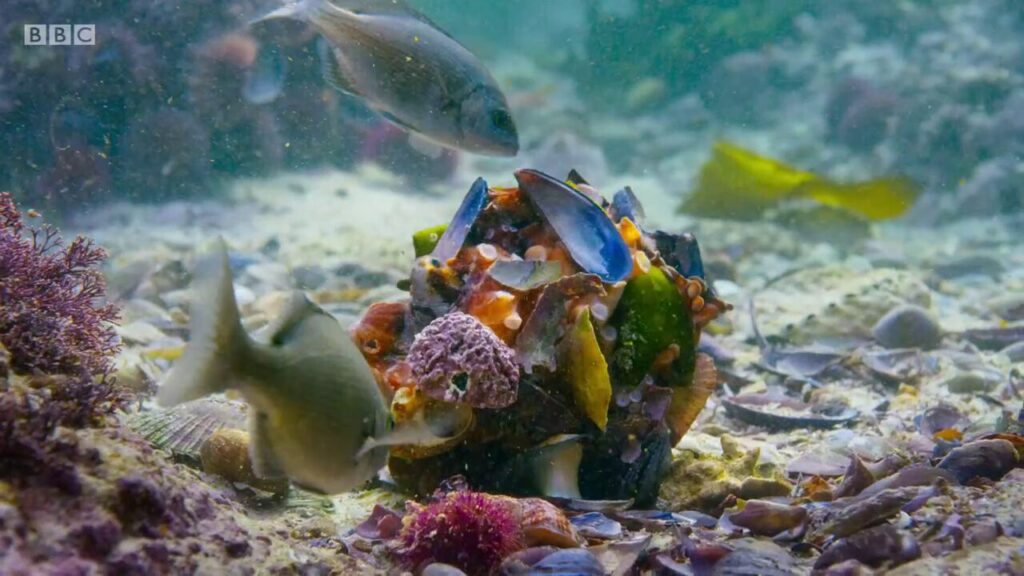
The octopus, when sensing danger, picks up pieces from the surroundings to cover itself
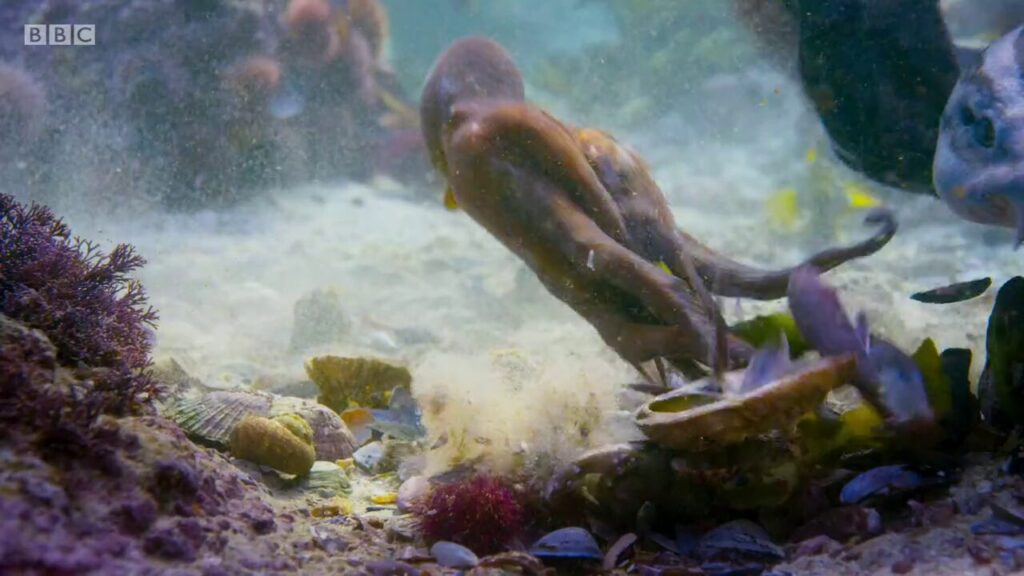
The garibaldi doing its gardening
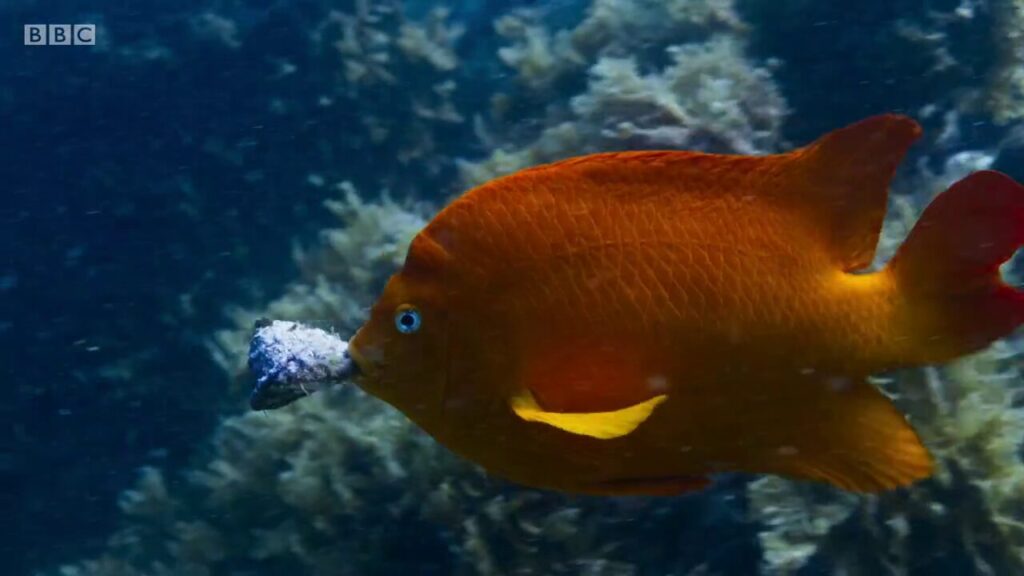
Kelp
